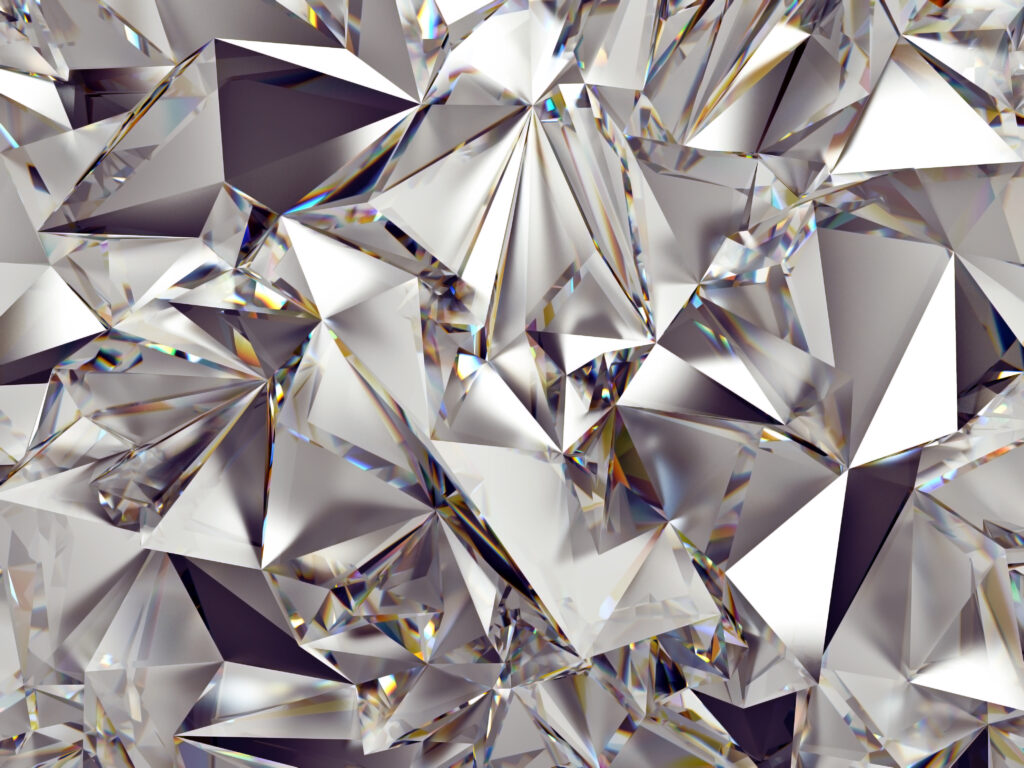Having more, rather than having less, is generally thought to be a good thing. A reason why most people feel that a diamond with more facets will sparkle more. Is adding more facets to a diamond the only way to increase brilliance, fire, and scintillation? When it comes to diamond design, industry experts agree that the exact proportion and symmetry of the facets, rather than the number of facets, determine the diamond’s fire, brilliance, and scintillation. As a result, the crown and pavilion facets serve fundamentally distinct purposes in terms of a diamond’s brightness.
To begin, it’s critical to comprehend what a diamond facet is and what part it performs in the diamond’s design. A facet is a flat surface on the diamond’s geometric shape. If you look at a brilliant-cut diamond, for example, you’ll notice that it has 57 facets; the crown of the diamond has 33 facets on the upper section of the girdle and 24 on the pavilion, which lies underneath the girdle. There are 58 facets in some round brilliant cut diamonds. The facets are set in such a way that the appropriate amount of light enters and is reflected off the diamond. Here’s why the facets on the crown and pavilion of a diamond are believed to be completely different from the symmetry and proportion of a diamond, which normally impacts the gemstone’s brightness.

The crown of a diamond can be defined as the gemstone’s window and framing; its purpose is to allow as much light into the diamond as possible. Each unique facet, in this case, has two pieces that act independently of one another:
The window will aid in the entry of light into open spaces and its transformation into coloured light or dispersion.
The frames are the sharp intersections and lines that divide the different aspects. The frames, unlike the windows, do not absorb light, but rather distribute and neutralise it; this has an effect on the glitter and scintillation of a diamond.
The function of a pavilion is much simpler than that of the crown. While the crown works as a diamond’s windows, allowing light to enter the stone, the pavilion helps to redirect the light back to the wearer’s or observer’s eye.
Despite the fact that facets contribute to a diamond’s fire, brilliance, and scintillation, the issue remains: does a diamond with more facets have greater sparkle? The answer to the question is a resounding ‘no.’ Adding more facets to a diamond will not increase its radiance. Giving a diamond more facets will merely increase the number of reflections in the gemstone, rather than affect the diamond’s brilliance and shine. Giving the diamond more facets, for example, will just result in more windows in the same amount of space. This could result in smaller diamond windows and several additional frames, allowing less light to enter the diamond and reflect back to the wearer and viewer.
A skilled craftsman must cut a diamond correctly in order for it to realise its full potential.
Light reflects in a way that makes a diamond appear brighter when it is cut to perfect proportion and symmetry.
